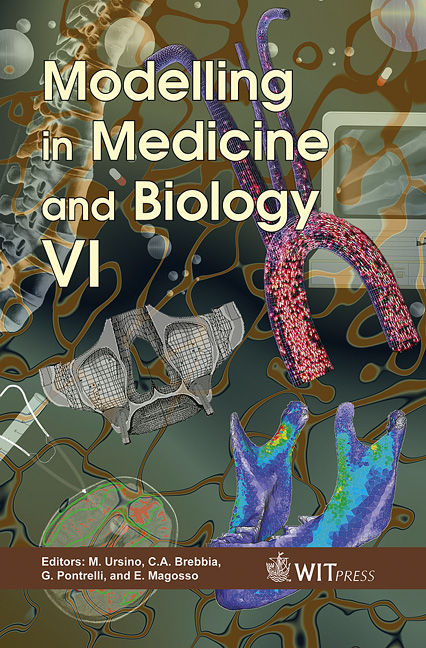Identification Of The Dynamic Component Of The Finger Arterial Pressure-volume Relationship
Price
Free (open access)
Transaction
Volume
8
Pages
8
Published
2005
Size
364 kb
Paper DOI
10.2495/BIO050151
Copyright
WIT Press
Author(s)
J. Talts, R. Raamat & K. Jagomägi
Abstract
Similar to most biological tissues, the arterial wall has both elastic and viscous properties. This is the reason why recordings of the pressure-volume (P-V) characteristics show a shape of hysteresis loops and are different for static and dynamic measurements. The exact model of the viscoelastic P-V relationship would be complicated, containing several sections with potentially nonlinear properties. The volume changes, in the simplest arrangement, can be viewed as a sum of fast and slower components. We propose a method to identify the fast (dynamic) component of the nonlinear P-V relationship. Continuous finger blood pressure is measured by applying the Finapres monitor, while volume pulses at a controlled cuff pressure are recorded by the transmittance mode photoplethysmograph. The nonlinear relationship is modelled by five parameters. The identification is based on the fitting of parameters of the P-V relationship to obtain maximum similarity between the filtered waveforms of the modelled and measured volume signals. The method was tested on 9 normal subjects. The results show that the applied algorithm can be used even in case of remarkable viscous creep effects. Keywords: modelling, system identification, pressure-volume relationship, arterial compliance, blood pressure, photoplethysmography. 1 Introduction Peripheral circulation is strongly influenced by the peripheral resistance and compliance. According to the definition, peripheral compliance is equal to the slope of the peripheral pressure-volume (P-V) relationship and can be expressed as C=dV/dP. In general, this relationship is nonlinear, and this nonlinear nature of the arterial mechanical relationship results in appearance of a maximum
Keywords
modelling, system identification, pressure-volume relationship, arterial compliance, blood pressure, photoplethysmography.





